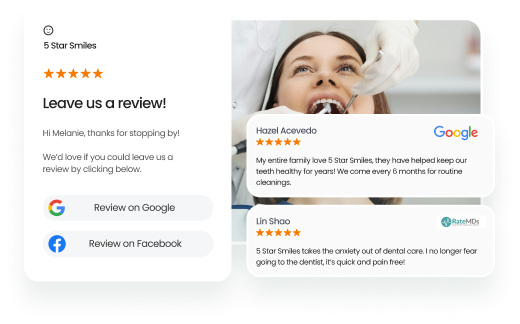There’s a widening gap between what executives expect from social media and what marketing teams actually measure. Leaders want to see how social drives revenue and pipeline, while marketers often report engagement and impressions, numbers that look good on dashboards but rarely hold up in boardrooms.
Summary
This blog explores the growing performance gap between executive expectations and marketing measurement in social media, revealing why brands struggle to prove ROI despite increased activity. It explains how misaligned goals, weak attribution, and slow response times prevent teams from linking social performance to tangible business outcomes. Using insights from Birdeye’s State of Social 2026, it outlines a practical framework for aligning user intent with measurable KPIs, automating attribution, and treating response time as a growth lever. Finally, it shows how Birdeye Social AI helps enterprise teams close this gap by unifying workflows, optimizing engagement, and turning every post, reply, and report into revenue-driving results.
Follow along for practical frameworks, actionable tactics, and measurement tips to help you connect social activity directly to business outcomes.
Why people open social apps
Social interactions always begin with intent. People log in to be entertained, connect with others, or stay informed. If your content doesn’t align with that intent, it might be seen, but it won’t make anyone stop, engage, or take action.

Birdeye’s State of Social 2026 report shows:
- 53% log in for entertainment
- 50% to connect with friends and family
- 43% to keep up with news and events
These numbers highlight that most social sessions begin with personal motives, not a desire for polished brand content. Therefore, understanding user intent is the first step to creating content that feels relevant and performs better.
Why intent matters for enterprise brands
Too often, teams chase formats without asking whether the content fits the user’s intent for opening the app. For multi-location businesses, that misalignment scales into wasted effort and missed opportunities to connect with customers.
So, how to match intent to content and goals? When mapped to intent, every post has a clear purpose:
- Entertainment: Short, funny videos or memes to win attention
- Learning: How-tos and quick tips that deliver value fast
- Curiosity: Polls, questions, or interactive posts to sustain engagement
Instead of asking, “What should we post?” start with, “Which intent are we serving?” This mindset connects every post to a user motive, a format, and a measurable goal.
Practical steps for multi-location brands
- Map each post to one clear intent
- Define a single KPI that shows whether the content delivered on that intent
- Run short tests, review the data, and scale the formats that work
Key takeaway: When brands start with intent, they respect the reason people are on social in the first place. That empathy makes content more relevant, easier to measure, and far more likely to contribute to business outcomes.
But understanding user intent is only half the challenge. Many enterprise teams struggle when their brand goals don’t align with these motives, creating a gap that limits ROI.
Why do brand goals and user intent often misalign
Even when teams understand user intent, many still struggle to align it with business goals. The disconnect shows up when brands plan content around awareness, engagement, or leads, while users open apps for entertainment, connection, or information. The result? Posts that look good but don’t move the business forward.

Birdeye data confirms this gap:
- 56% of brands cite awareness as a top goal
- 54% focus on engagement or reputation
- 41% pursue lead generation
These goals make sense, but the problem lies in how success is measured. Many teams still track vanity metrics such as likes, impressions, and follower counts. These metrics look good on dashboards but fail in the boardroom. Executives care about growth, acquisitions, and retention, while marketers often speak in terms of clicks and engagement rates. That’s the real performance gap.

The fix: Align goals with outcome-based KPIs
Link every brand goal to a measurable, outcome-driven KPI. For example:
- Awareness -> unique reach or view-through rate
- Engagement -> engaged-user-to-action conversion
- Reputation -> sentiment trend or resolution time
- Leads/Sales -> UTM-attributed conversions or MQLs
Key takeaway: Goals only matter when matched to intent and measured by credible KPIs. Anything else is activity without impact.
What prevents enterprise brands from scaling social media ROI?
Even when goals and KPIs align, many enterprise teams still struggle to prove ROI. The reason isn’t a lack of effort; it’s operational blind spots that make performance hard to track and scale.
Birdeye’s State of Social 2026 report highlights the top challenges:
- Generating new content ideas (33%)
- Measuring results and impact (27%)
- Producing enough video content (27%)

These challenges boil down to three common roadblocks:
1. Attribution blind spots
Many posts lack UTMs, post IDs, or consistent attribution windows. As a result, clicks and conversions happen, but can’t be traced back to content. This creates blind spots where clicks and conversions happen, but no one can prove which post drove them.
2. Content without clear goals
Too often, content is published to “keep the calendar full.” Reviews focus on tone and visuals instead of whether the post drives a measurable action. This leads to busywork that doesn’t move the business forward.
3. Fragmented inbox and slow triage
When DMs, comments, and reviews are scattered across platforms, response times suffer and leads slip through the cracks. Delays erode trust and reduce conversion opportunities.
Key takeaway: ROI struggles rarely stem solely from strategy. They stem from execution gaps, weak attribution, unfocused content, and slow response, creating blind spots between activity and outcomes.
Now, let’s look at another critical element of social media management for multi-location brands — how quickly teams respond to customers.
How quickly should brands reply on social media?
Customers expect quick replies when they comment, message, or leave a review, but many brands still take a full day or more to respond. Those delays frustrate customers and create lost opportunities and revenue leakage. A fast, helpful response keeps the conversation alive and can directly convert interest into a lead.

How to meet expectations:
- Set a clear SLA: Aim to respond within 60 minutes during business hours and within 24 hours on weekends.
- Balance speed with nuance: Automate simple replies for FAQs, but keep humans involved for refunds, policies, or sensitive situations.
- Connect to broader systems: Ensure triage and attribution processes feed reply-time data into your CRM, so conversions are measurable.
Key takeaway: Treat reply time as a performance metric. Automate for speed, keep human review for judgment, and measure every response against conversion. This approach turns conversations into measurable sales opportunities.
How can brands align social strategy with measurable outcomes?
To turn social into a real growth driver, brands need a disciplined workflow. Every post, campaign, and reply should connect directly to a measurable business result. This five-step workflow ensures that the connection stays clear and consistent.
Step 1: Map goals to the funnel
Every post should target one stage of the customer journey: Awareness, Engagement, Reputation, Leads/Sales. Focusing on one goal per post keeps content purposeful and measurable.
Step 2: Pick one KPI per goal
Avoid vanity metrics. Focus on the single outcome measure that best reflects business impact.
Step 3: Tag everything
Use UTMs, IDs, and defined attribution windows to ensure every click or action can be traced back to content.
Step 4: Automate attribution
Integrate post IDs into your CRM so engagement data links automatically to revenue outcomes.
Step 5: Maintain fast response standards
Treat reply time as a measurable growth lever. Quick responses build trust and accelerate conversions.
Key takeaway: This framework ensures alignment between user intent, brand goals, and measurable outcomes. With it, leadership stops questioning social ROI and starts seeing it as a proven business engine.
Looking ahead: The next chapter for social performance
Social media has moved beyond vanity metrics. Executives now want proof that every campaign contributes to growth, not just engagement. This shift gives enterprise teams both a challenge and an opportunity.
The challenge is clear. Social success requires consistent tracking, faster responses, and content that connects with user intent. Without these elements, proving ROI becomes difficult.
The opportunity is just as clear. Brands that master these basics today will set themselves apart tomorrow. By connecting social activity to measurable outcomes, they build trust with leadership and secure long-term investment in the channel.
Looking ahead, the future belongs to enterprise teams that treat social as a true growth driver. It is no longer enough to post content and hope for results. Success will come from clear goals, precise measurement, and workflows that link activity to outcomes.
The next chapter of social performance is not about doing more. It is about doing what matters, measuring it well, and showing the impact that executives care about.
FAQs
Social media proves revenue impact by connecting engagement metrics to business outcomes such as sales, leads, or retention. This requires consistent UTMs, attribution tracking, and reporting that ties campaigns directly to pipeline growth.
Vanity metrics like likes and impressions fail executives because they don’t demonstrate business value. Without a link to revenue or acquisition, they reduce credibility and risk budget cuts.
The biggest ROI challenge is misalignment: executives prioritize revenue, while marketers often track awareness and engagement. This creates a measurement gap that prevents social from being seen as a growth driver.
Faster response times increase conversions and retention. Customers expect near-instant replies; delays often result in lost opportunities to competitors.
A five-step framework works best: (1) map content to user intent, (2) assign one KPI per post, (3) enforce UTMs, (4) automate attribution, (5) set response-time SLAs. This ensures social media contributes to measurable business growth.
Enterprise brands must start with user intent because most sessions begin with entertainment, connection, or information-seeking. Content that aligns with these motives drives engagement that converts, not empty likes.
Turning social media into a measurable growth driver with Birdeye
The pace of social change is accelerating. Teams are being asked to prove revenue impact while managing more platforms, formats, and customer conversations than ever before. The brands pulling ahead aren’t just posting more; they’re working smarter with the right tools.
Birdeye Social AI gives enterprise teams that edge. It connects every post, comment, and message to measurable outcomes through automation, analytics, and AI-driven insights.
Here’s how Birdeye Social AI helps teams close the performance gap:
- Instant ideation: Generate on-brand post concepts, captions, and hashtags in seconds.
- Auto-optimized scheduling: Queue posts at the exact time your audience is most active across networks.
- Smart replies at scale: Draft personalized responses to DMs, reviews, and comments while keeping your brand voice consistent.
- Unified calendar: Manage every location and platform from one dashboard, with role-based permissions for multi-location teams.
- Real-time performance insights: Track KPIs like response time, engagement rate, and revenue attribution in one view, and watch recommendations adjust as trends shift.
That’s the difference between keeping up and leading: smarter workflows today drive measurable growth tomorrow.
Ready to close the performance gap and scale smarter? Watch our free demo to see how Birdeye can help turns every post, reply, and report into business results your executives will trust.

Originally published









